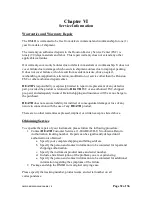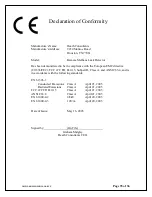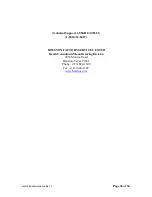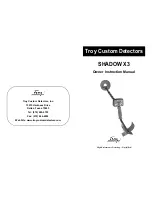
Page 27 of 36
101515-0 RMLD MANUAL REV
F
D i r e c t S u n a n d A m b i e n t
L i g h t A d d s D e t e c t e d
B a c k g r o u n d P h o t o n s
T o p o g r a p h i c B a c k s c a t t e r o f
L a s e r L i g h t a n d B a c k g r o u n d
L i g h t C o l l e c t e d b y R e c e i v e r
D e t e c t o r
L a s e r
L i g h t B e c o m e s E l e c t r i c i t y
Fig. 4-4
To detect leaks, as the above illustration depicts, when the IR laser beam passes through a
gas plume, and is reflected back, the reflected light is collected and converted to an
electrical signal that carries the information needed to deduce the methane concentration.
The laser light is selective to methane, and will not false alarm on other hydrocarbons.
This signal is processed so that methane concentrations can be reported in parts-per-
million-meter or ppm-m.
Ppm-m is the product of the methane concentration times the width of the plume. For
example, if the leak is creating a gas cloud of 1000 PPM and is about ½ meter in width
(the distance the IR beam passes through the plume). The RMLD will measure 500 ppm-
m.
For another example, if the average concentration of the gas cloud is 20 PPM and is
about 2 meter in width, the RMLD will measure 40 ppm-m, plus a background level of
15 ppm-m in this case, displaying a total value of 55 ppm-m.
Содержание RMLD
Страница 34: ...Page 34 of 36 101515 0 RMLD MANUAL REV F...
Страница 35: ...Page 35 of 36 101515 0 RMLD MANUAL REV F...












































